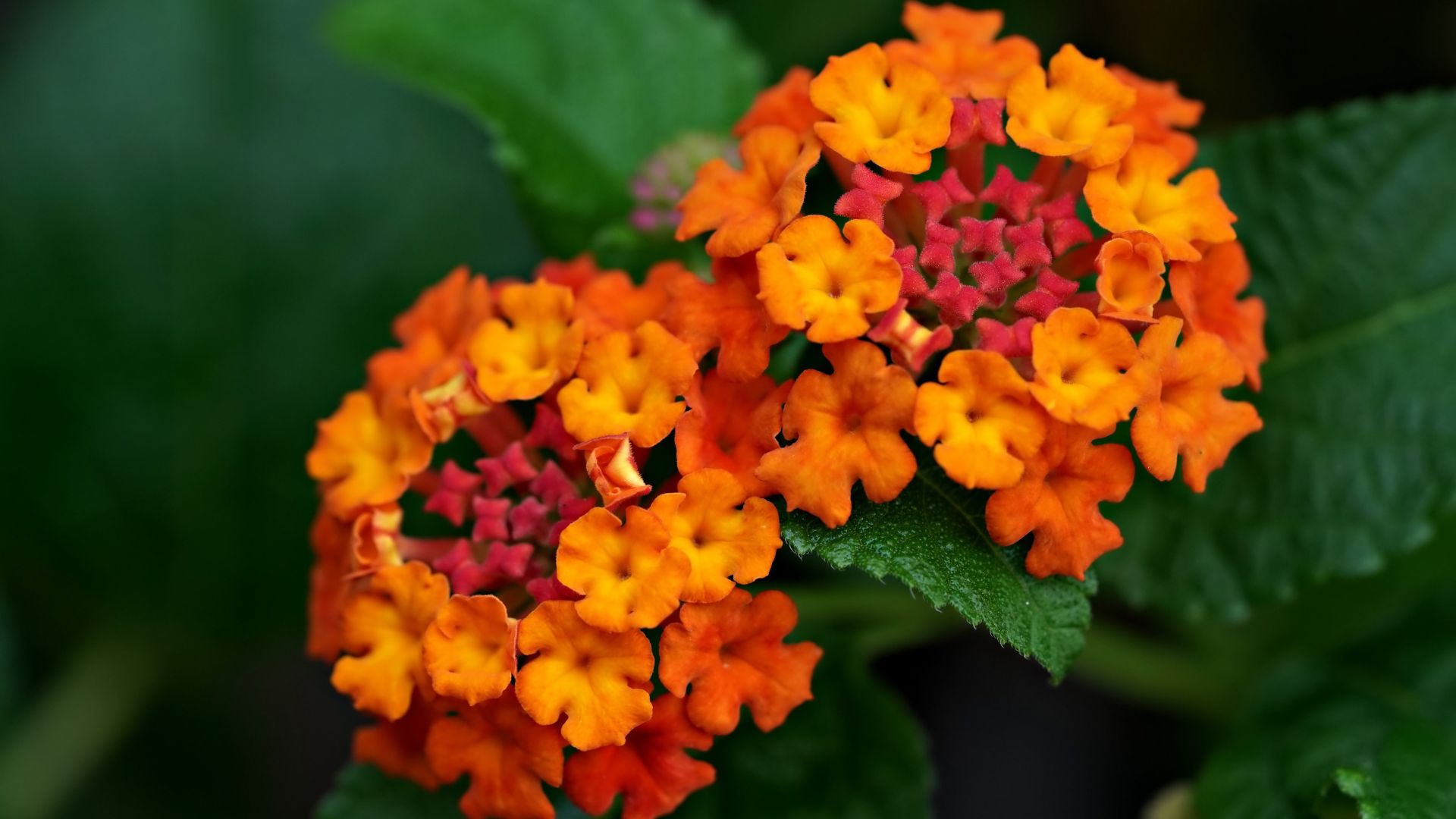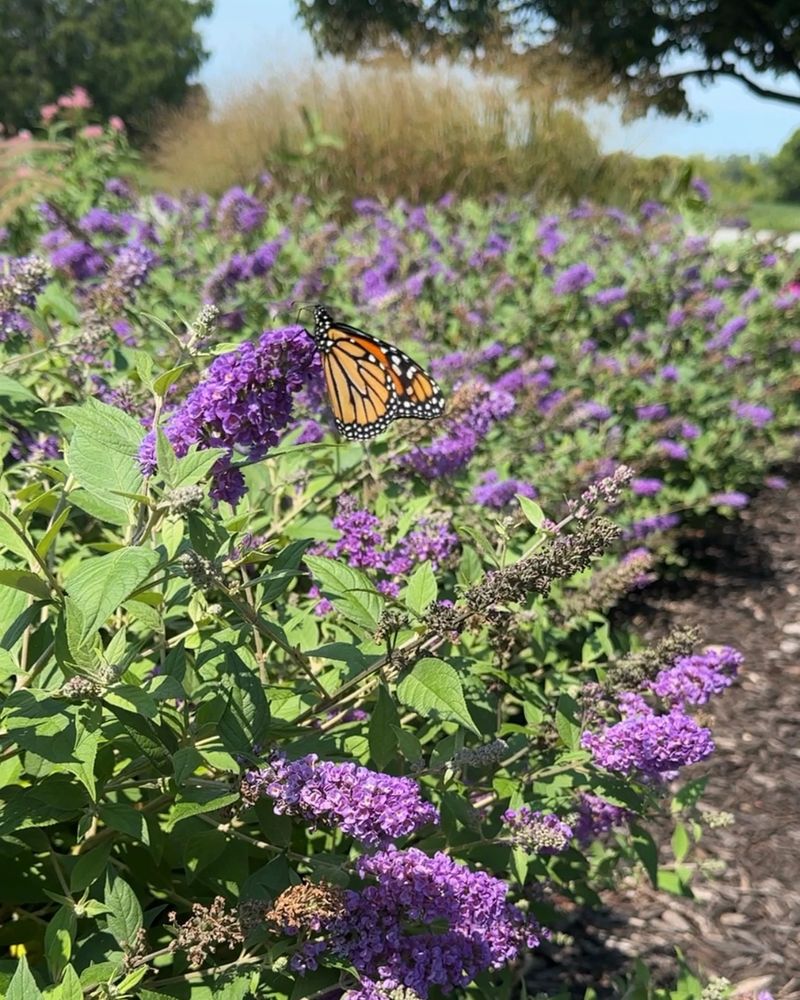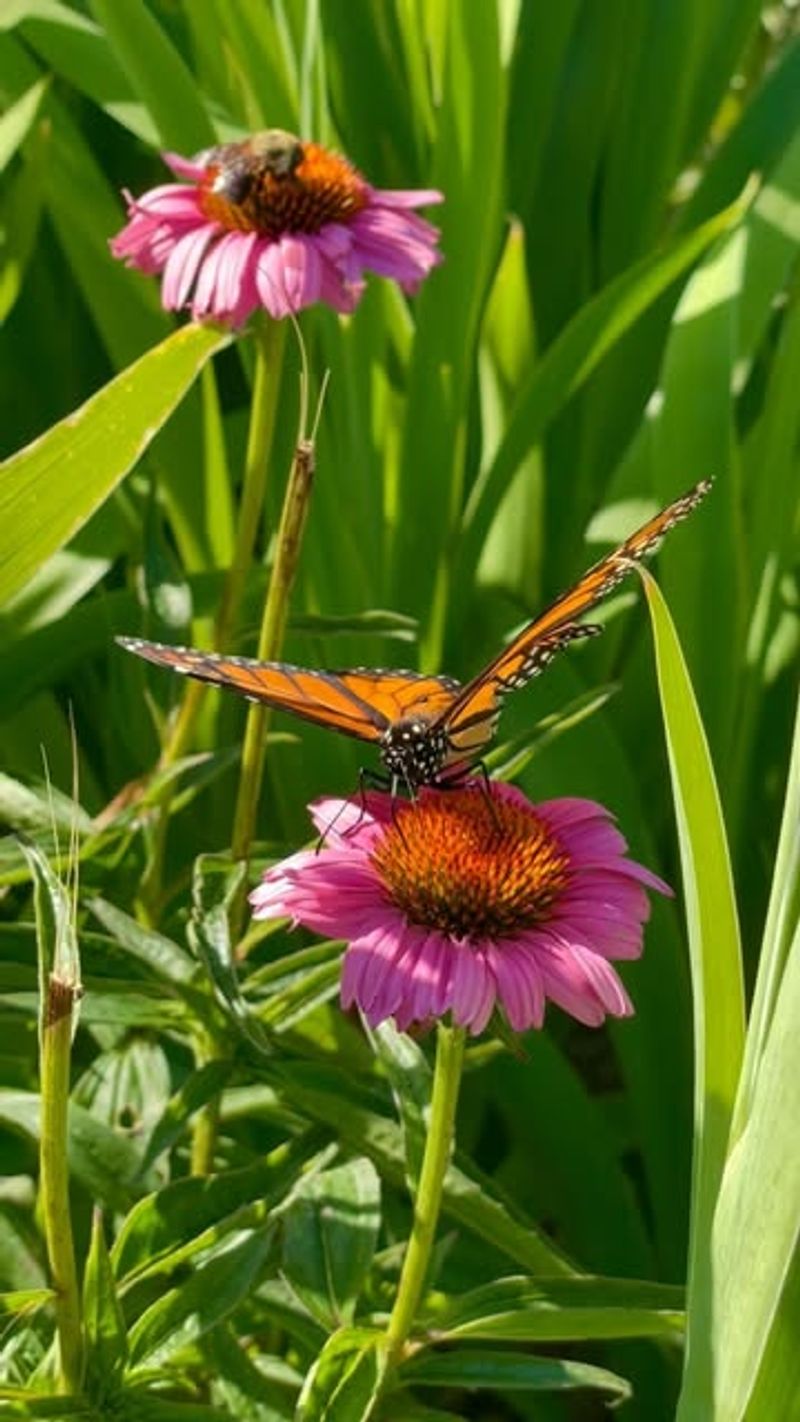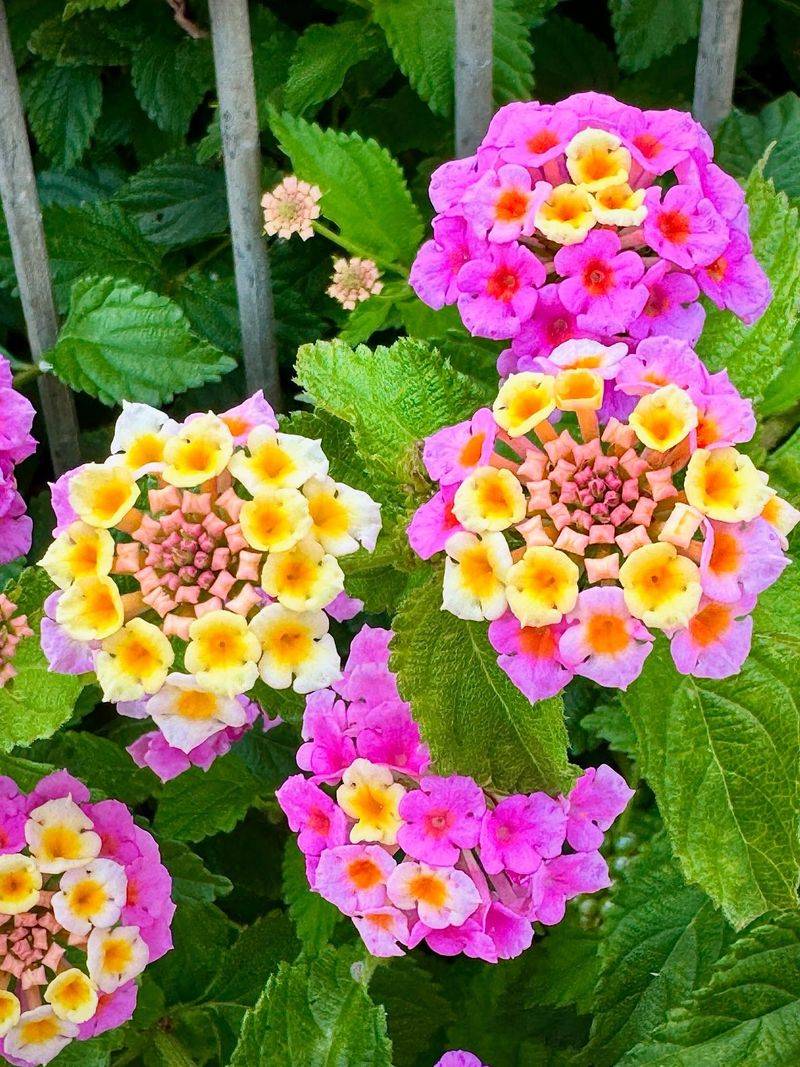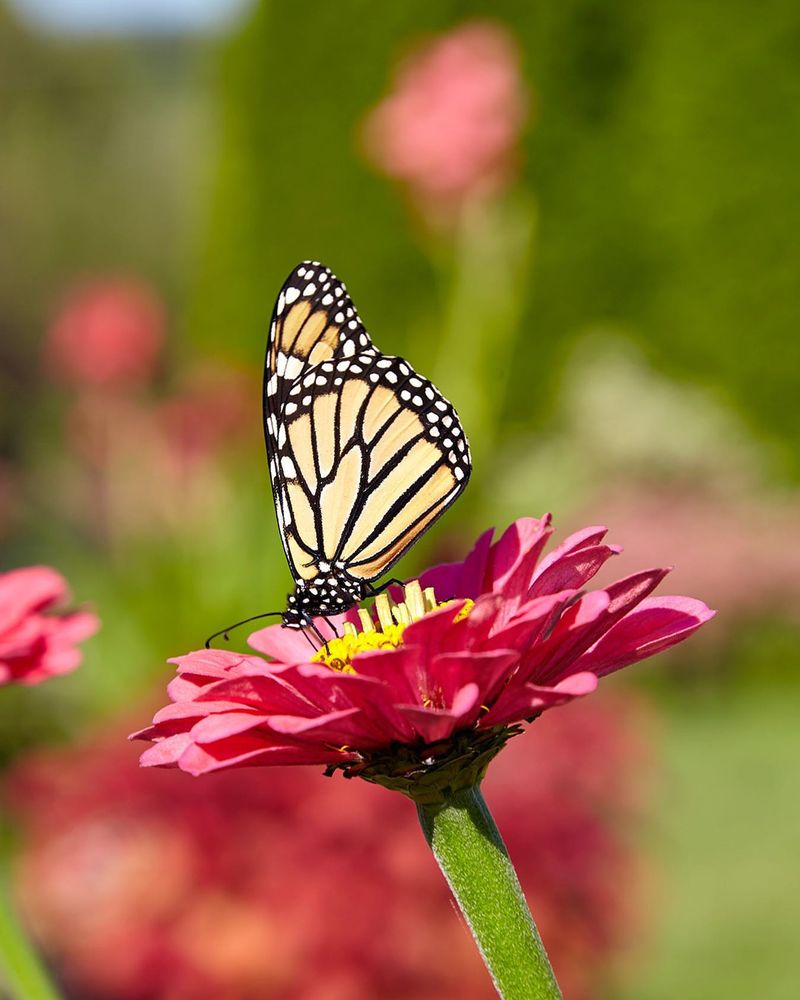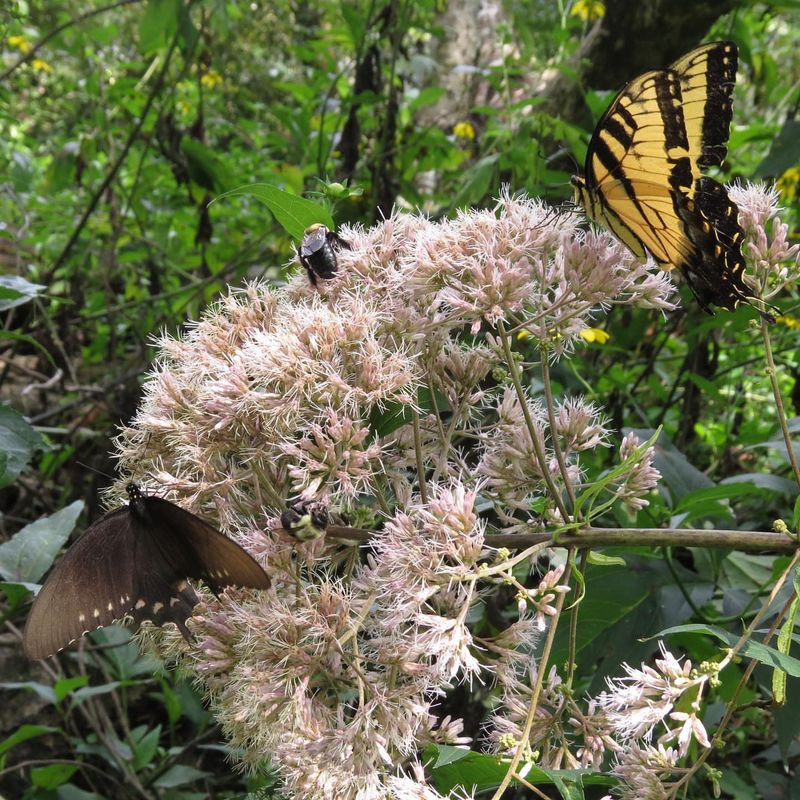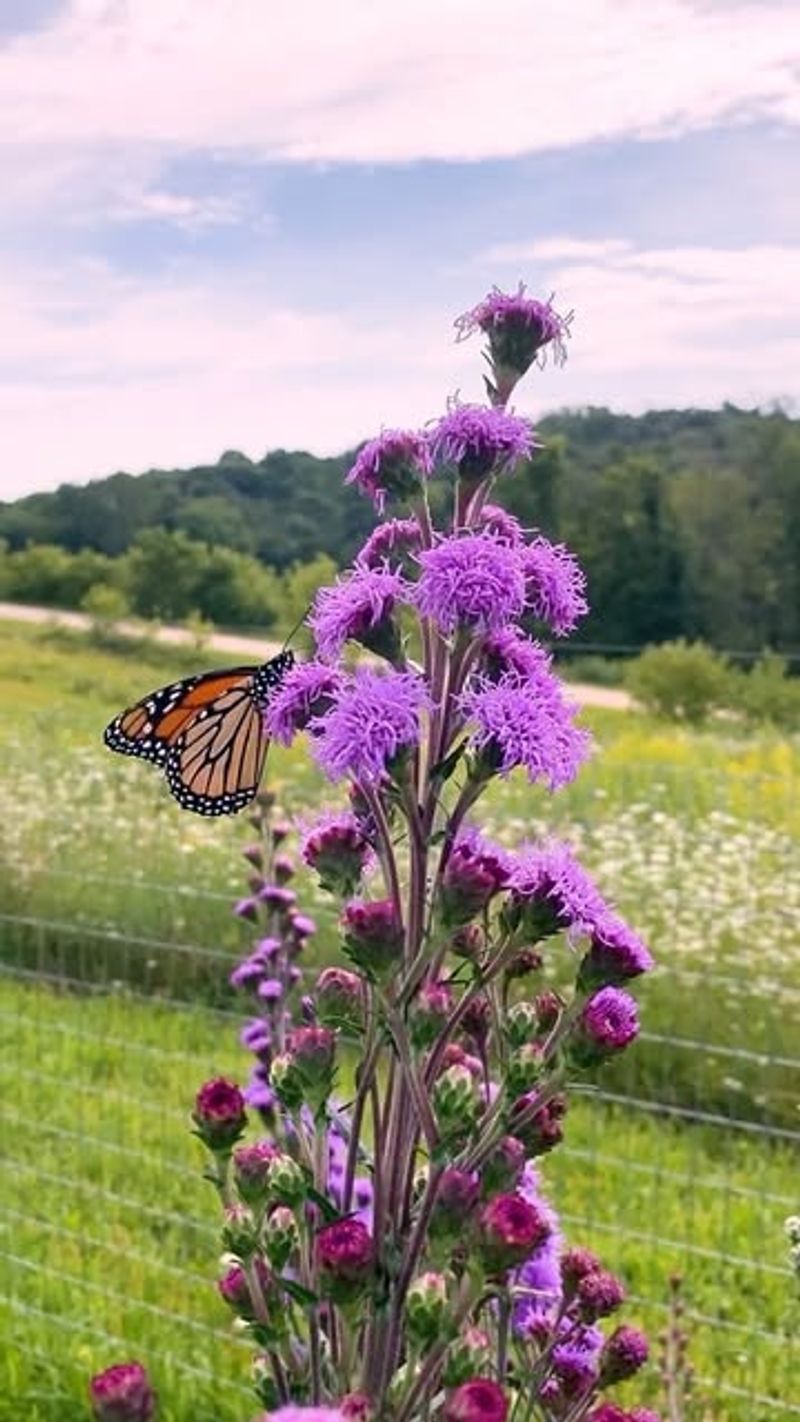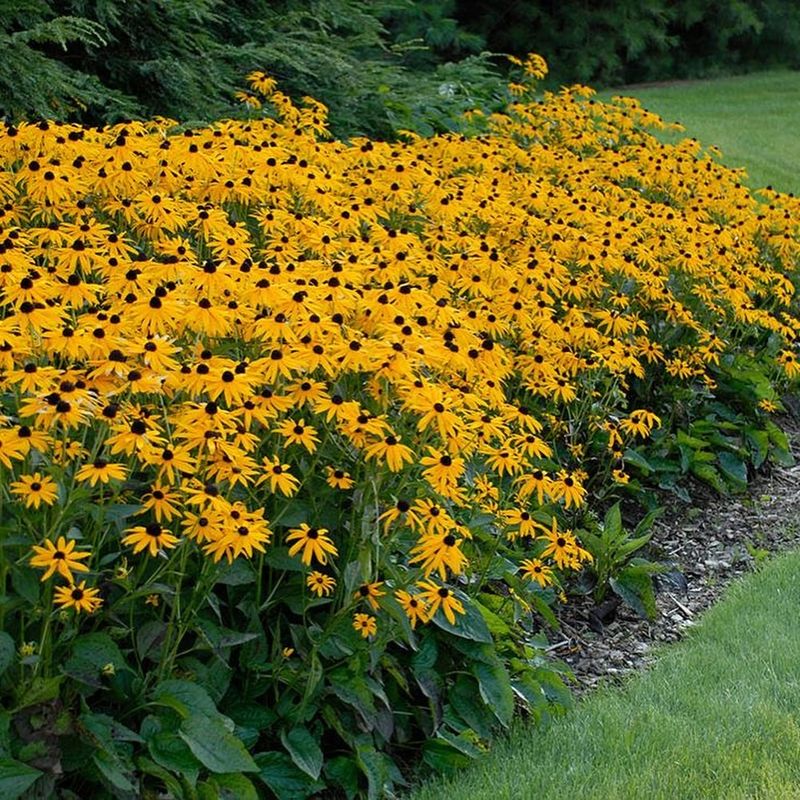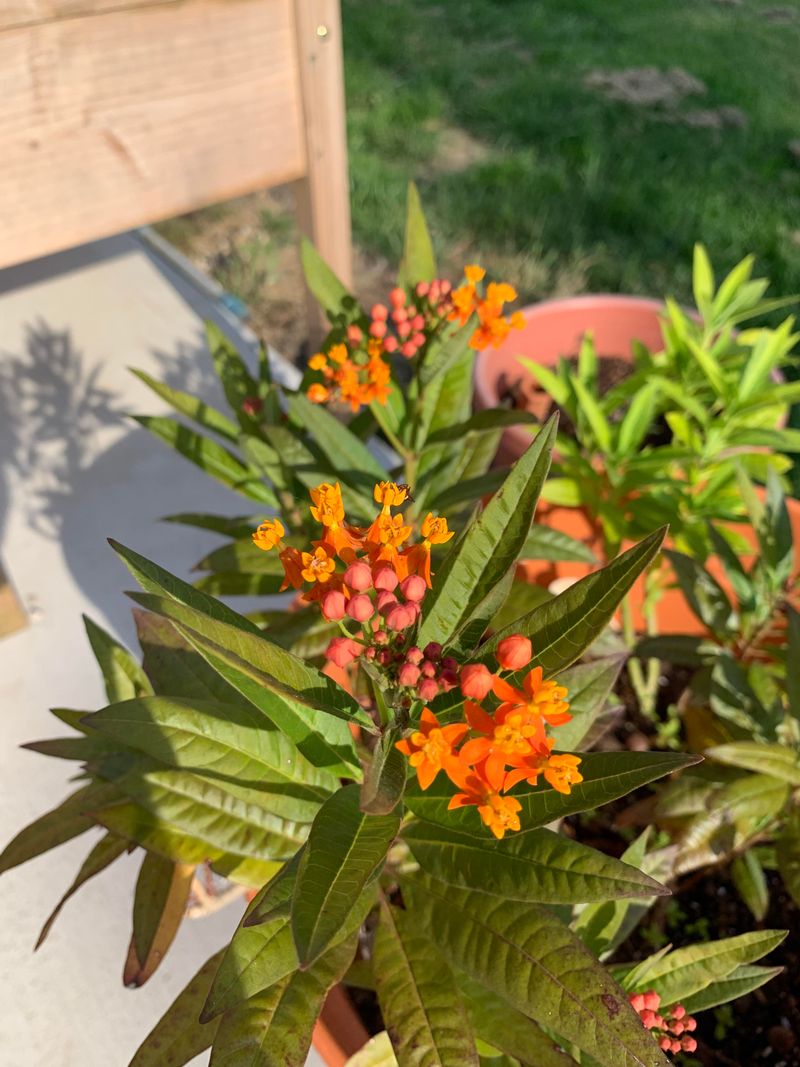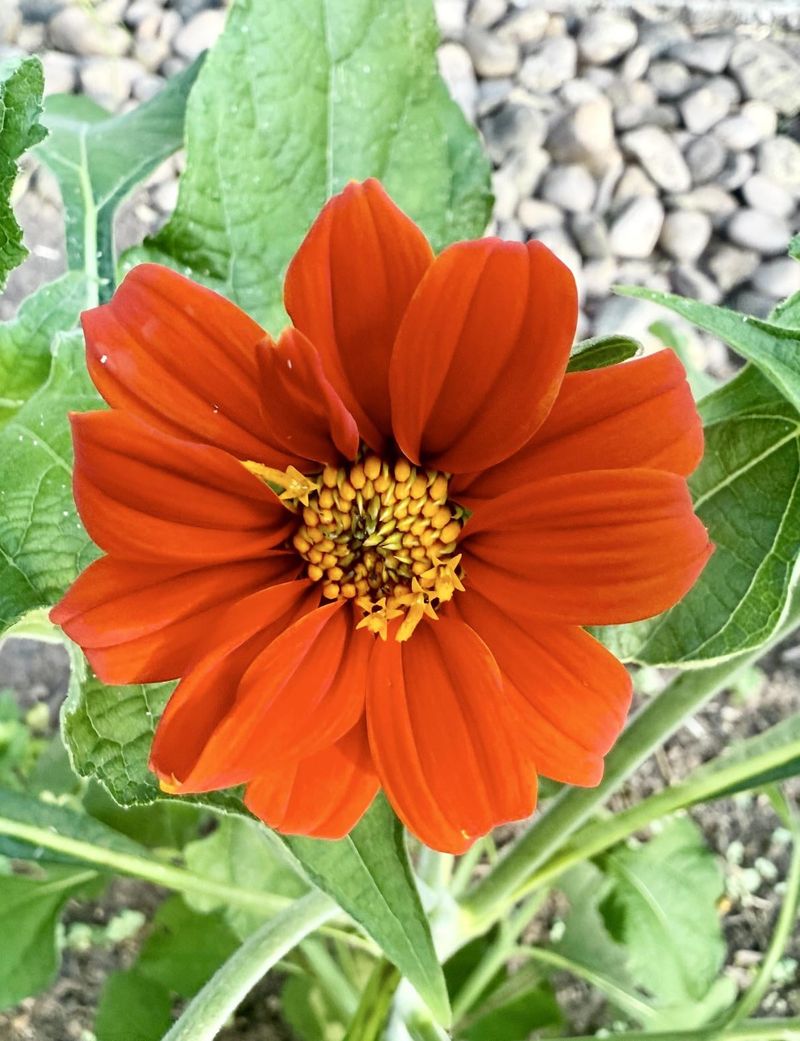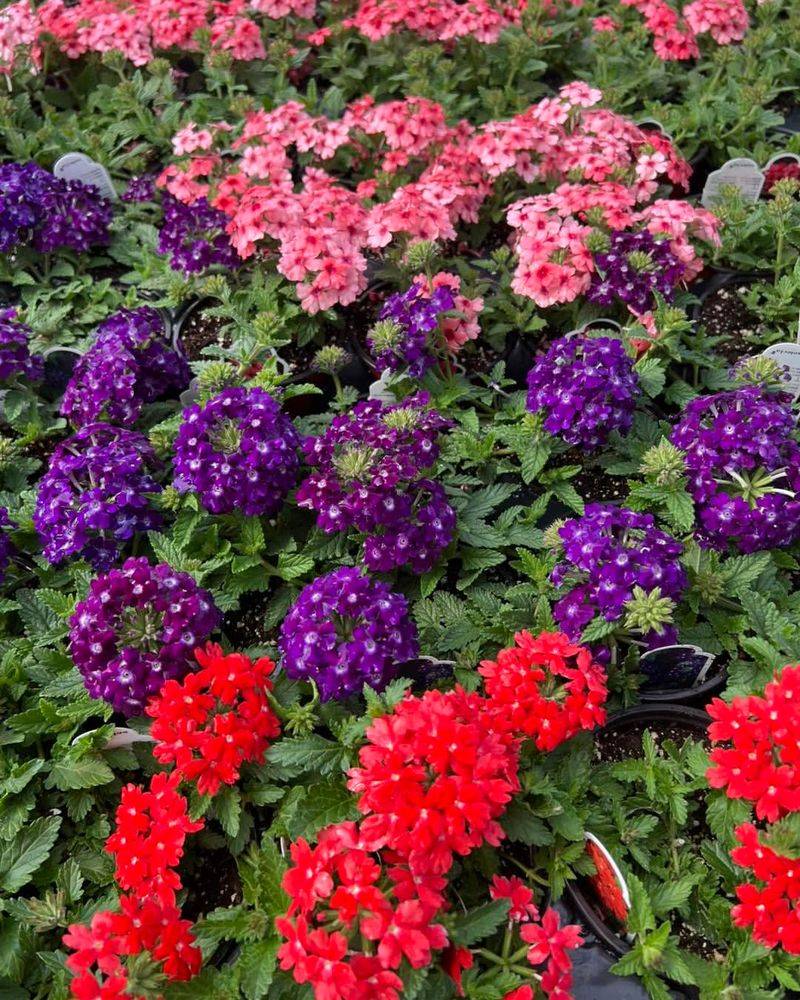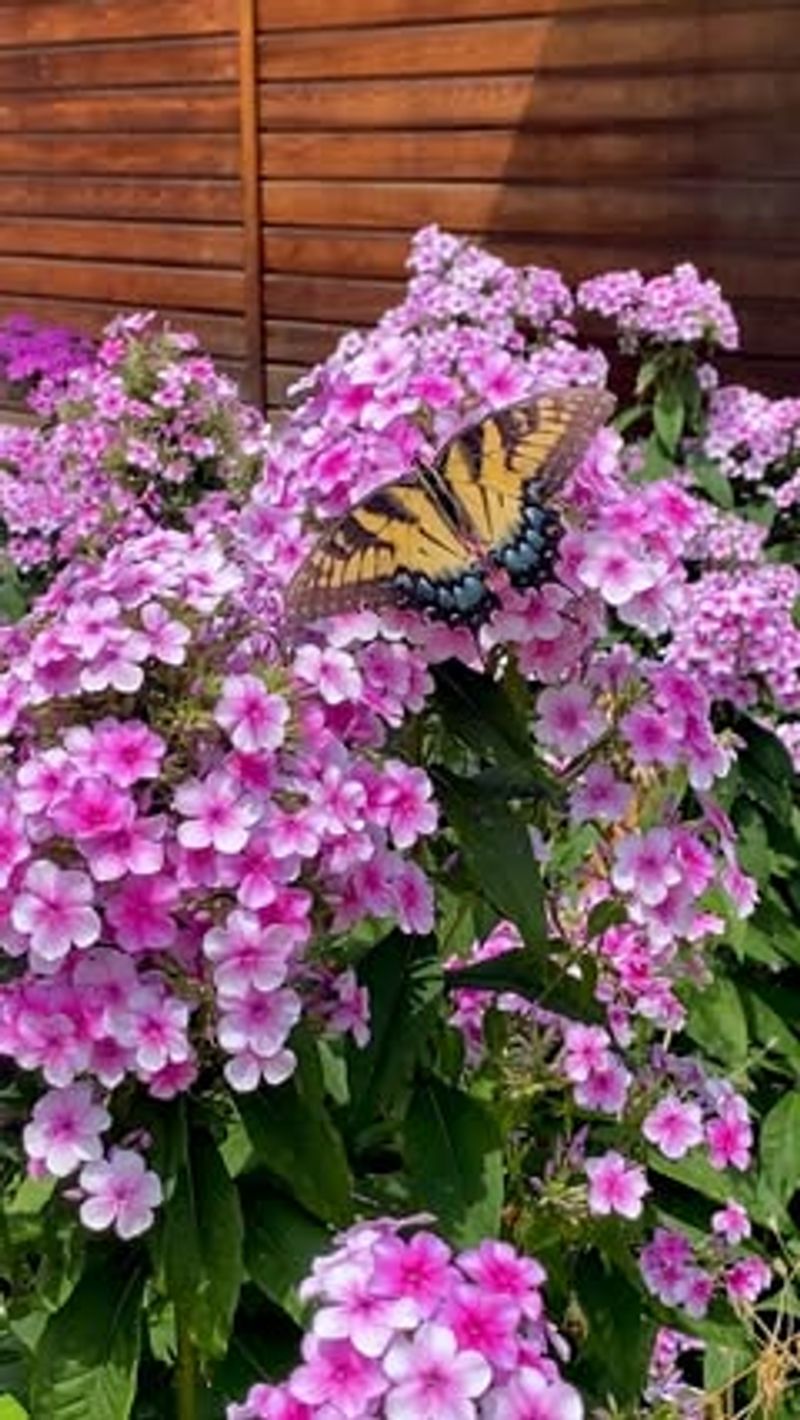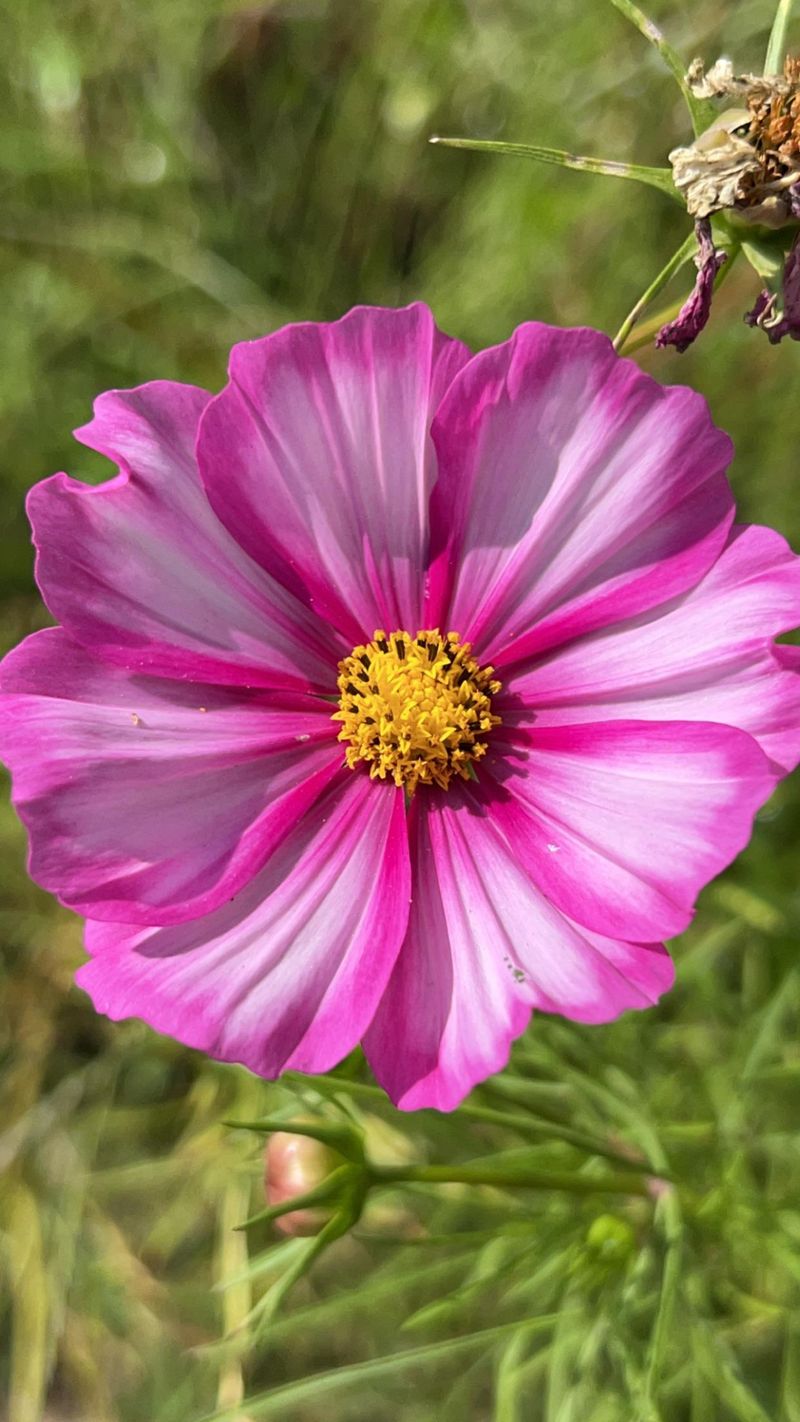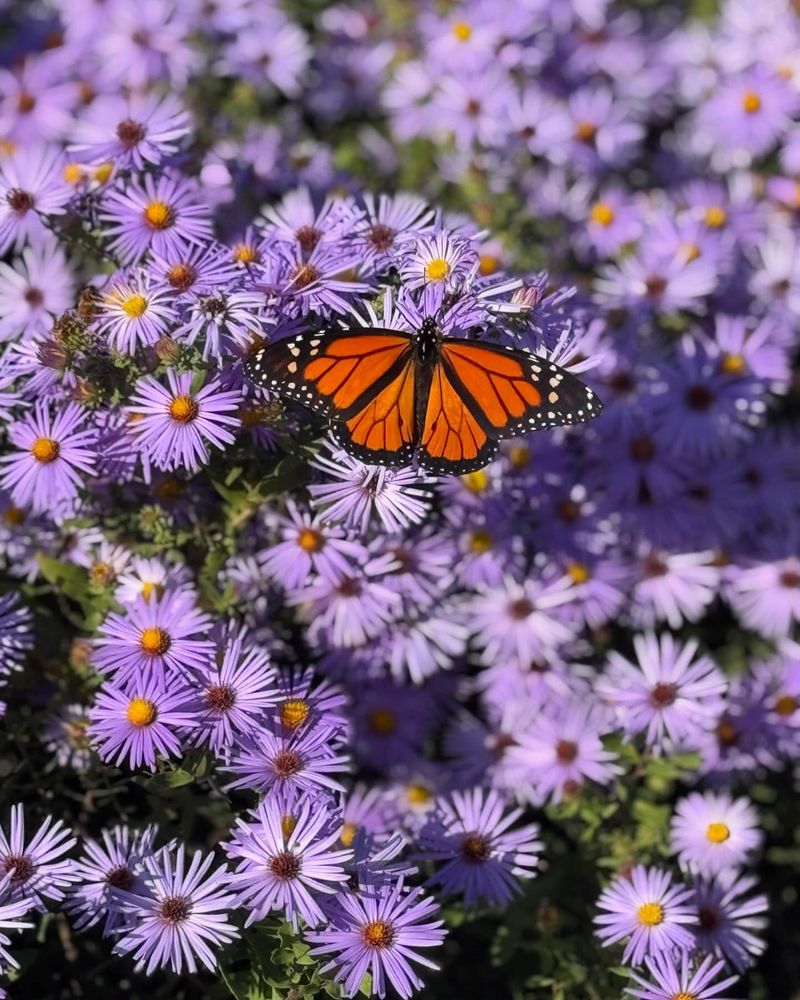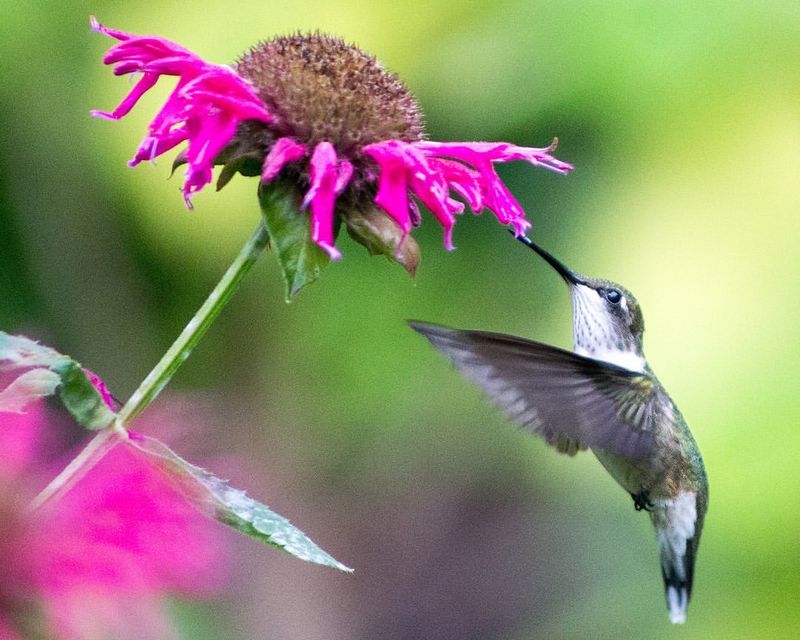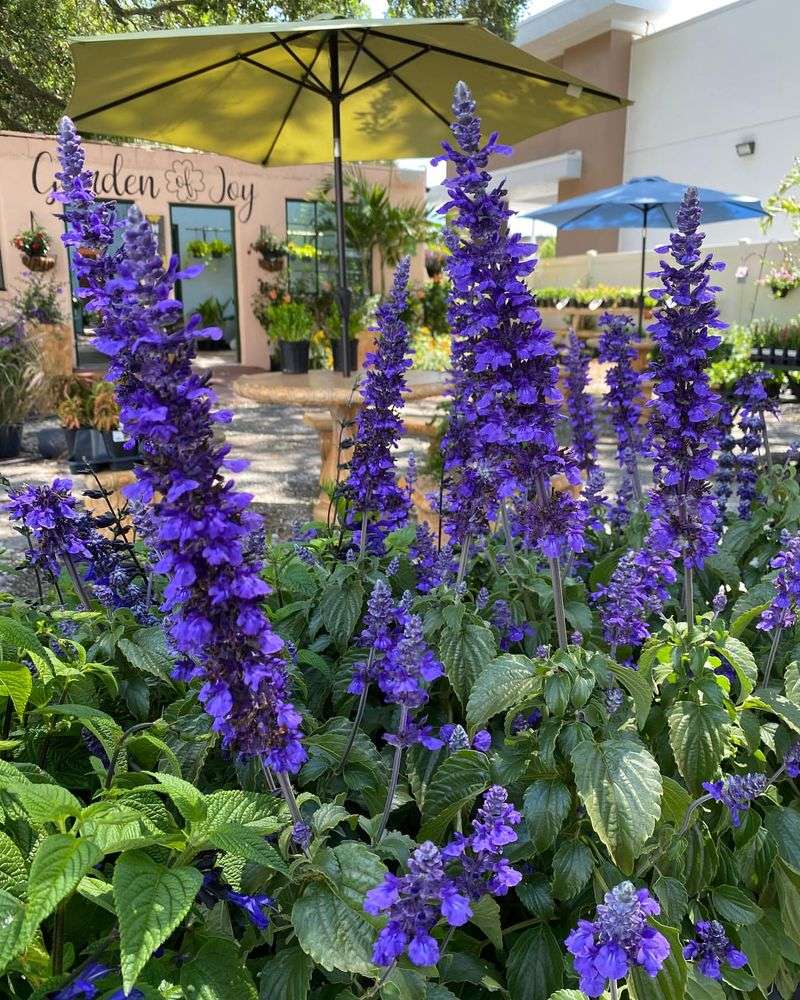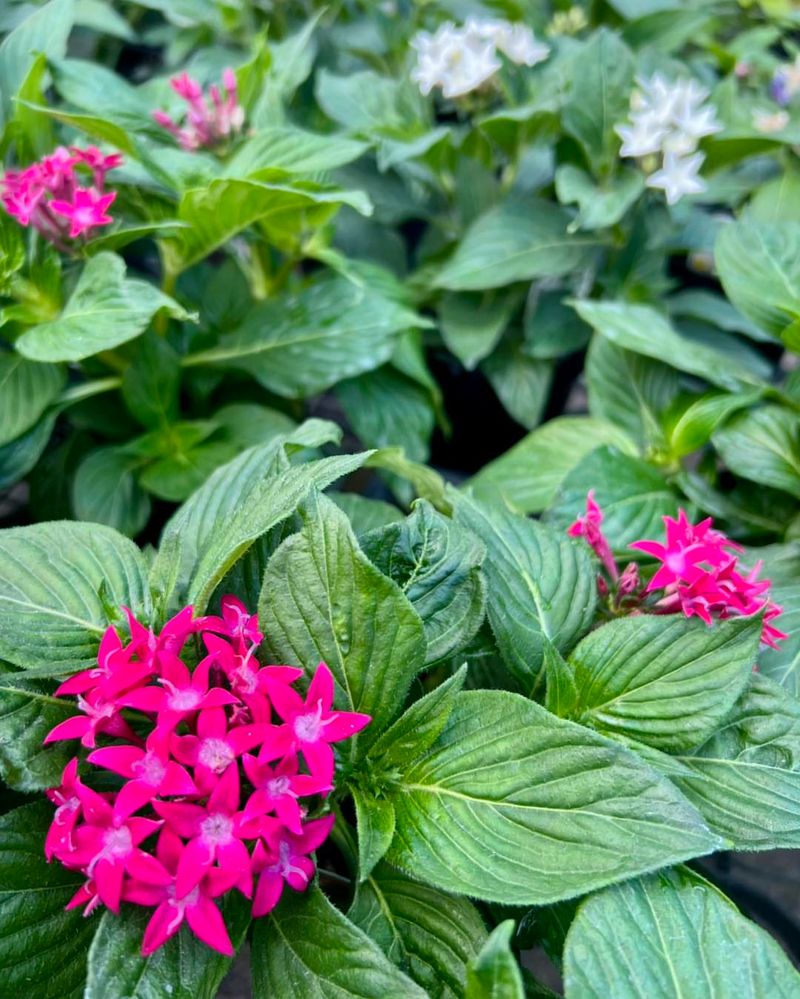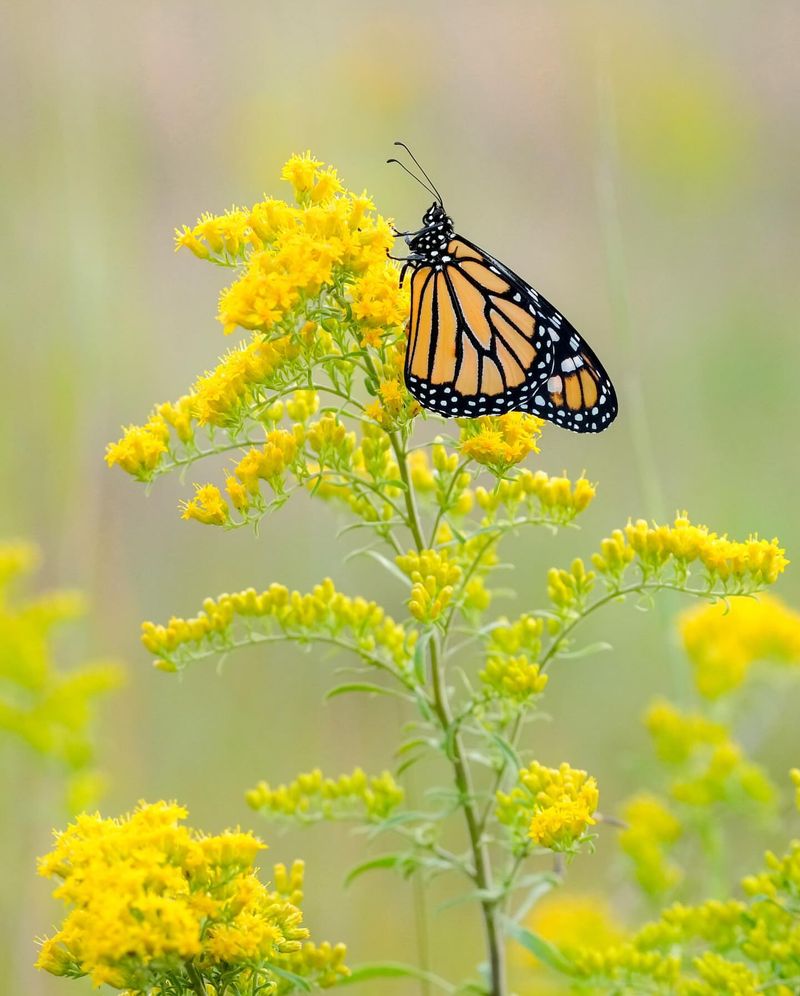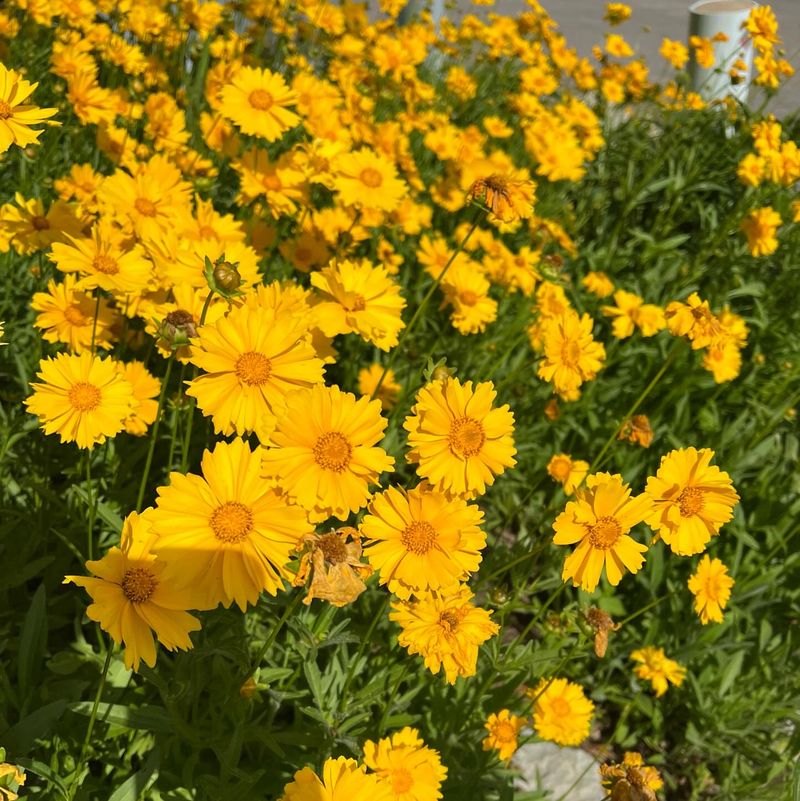There’s something magical about watching butterflies drift from flower to flower—it turns your garden into a living work of art. By choosing the right nectar-rich blooms, you’ll not only attract these graceful visitors but keep them coming back for more.
Flowers like zinnias, cosmos, and butterfly bush offer irresistible color and fragrance all summer long. Even if you’re working with a balcony or a handful of pots, a few smart plant choices can create a welcoming space they’ll love.
With these 18 summer bloomers in play, your outdoor space becomes a butterfly haven full of movement and charm. It’s beauty with a purpose—and the fluttering rewards are just the beginning.
1. Butterfly Bush
The cone-shaped flower clusters produce abundant nectar that draws butterflies like a magnet. My corner butterfly bush becomes a fluttering hub by mid-July.
Plant in full sun with good drainage for best results. The honey-scented blooms appear from June through frost without deadheading.
Available in purple, pink, and white varieties, these woody shrubs provide height in butterfly gardens. For small spaces, look for compact dwarf varieties that won’t overwhelm your garden.
2. Purple Coneflower
Native to American prairies, these sturdy perennials bloom continuously from June until September. The distinctive center cone serves as a perfect landing pad for butterflies seeking nectar.
Growing them in groups of three or five creates the most visual impact. Once established, they tolerate drought surprisingly well, making summer maintenance almost effortless.
Leave the spent flowers standing through fall to feed finches and other songbirds. Dividing plants every few years keeps them vigorous and flowering abundantly.
3. Lantana
Clusters of tiny florets in mixed colors create a kaleidoscope effect butterflies simply cannot resist. Growing this heat-lover in containers near the patio lets me enjoy butterfly visits up close.
Thriving in hot, sunny conditions, lantana performs beautifully when other flowers wilt. The multi-colored flower clusters change hues as they mature, adding visual interest beyond butterfly appeal.
Annual in northern regions but perennial in zones 8-11, lantana grows quickly and flowers non-stop until frost. Deer and rabbits typically avoid it, another plus for problem garden areas.
4. Zinnia
Growing zinnias from seed is remarkably easy, and butterflies reward this minimal effort with constant visits. The flat flower tops provide perfect landing pads for even large butterfly species.
Cut flowers regularly to encourage more blooms throughout summer. Deadheading spent flowers takes just minutes each week but extends the flowering season significantly.
Tall varieties make excellent backdrops while shorter types work beautifully in containers. For best butterfly attraction, choose single-flowered varieties rather than heavily doubled forms that restrict nectar access.
5. Joe-Pye Weed
Despite its unfortunate name, this native plant creates butterfly magic in late summer. The mauve flower clusters tower at 5-7 feet tall, creating dramatic height in garden backgrounds.
Naturally found in moist meadows, Joe-Pye weed appreciates regular watering during dry spells. The vanilla-scented flowers attract numerous butterfly species, particularly swallowtails and monarchs.
Dwarf varieties now exist for smaller gardens, reaching just 3-4 feet tall. Pairing it with shorter butterfly plants creates a layered feeding station that accommodates different butterfly species simultaneously.
6. Blazing Star
Tall purple spikes stand like floral exclamation points in the summer garden. Monarchs especially favor these native prairie plants during their migration season.
Planting blazing star in groups creates the most dramatic effect and strongest butterfly attraction. The unusual top-to-bottom blooming pattern extends the flowering period, providing nectar for several weeks.
Growing from corms that multiply yearly, blazing star becomes more impressive over time. Staking taller varieties prevents toppling when the substantial flower spikes develop fully in midsummer.
7. Black-Eyed Susan
Golden petals surrounding dark centers create cheerful summer-long displays that butterflies flock to. Combining them with purple coneflowers creates a classic prairie look in my front border.
Self-seeding happily, these native wildflowers establish easily and spread naturally. The bright flowers bloom prolifically from June through September, requiring almost no maintenance.
Cutting a few stems for indoor bouquets actually stimulates more flowering. Leaving some seed heads in fall feeds birds while allowing the plants to naturally colonize new garden areas.
8. Milkweed
Essential for monarch butterfly reproduction, milkweed also produces nectar-rich flowers that attract numerous butterfly species. The sweet fragrance wafts through the garden on warm summer evenings.
Growing several different milkweed species extends the blooming season. Butterfly weed (Asclepias tuberosa) with bright orange flowers tolerates dry conditions, while swamp milkweed prefers moister spots.
Seedpods develop after flowering, containing silky-haired seeds that disperse in fall breezes. Leaving some areas of the garden unmulched allows seeds to germinate naturally, expanding your butterfly habitat yearly.
9. Mexican Sunflower
Fiery orange blooms on tall stems create a dramatic butterfly feeding station from July until frost. Last summer, a single patch hosted five different butterfly species simultaneously.
Growing easily from seed sown directly in the garden after frost danger passes. The velvety foliage and bright flowers create a tropical look even in northern gardens.
Reaching 4-6 feet tall, these annuals make excellent background plants. Cutting flowers regularly for bouquets encourages branching and even more blooms throughout the season.
10. Verbena
Flat-topped flower clusters in purple, pink or white create perfect butterfly landing pads. The spreading growth habit makes verbena excellent for garden edges or container spillovers.
Heat and drought tolerance ensure continuous blooming through summer’s hottest days. Purplish varieties seem especially magnetic to butterflies in my garden beds.
Perennial in warmer zones but grown as annuals in northern regions, verbenas flower non-stop without deadheading. Low-growing varieties work beautifully in hanging baskets where butterfly visits can be observed up close.
11. Phlox
Fragrant flower clusters bloom for weeks during summer heat when many other perennials fade. Garden phlox creates a sweet perfume that draws both butterflies and gardeners closer.
Choosing mildew-resistant varieties ensures attractive foliage all season long. The sturdy stems rarely need staking, even after summer thunderstorms.
Available in white, pink, lavender, and bi-colors, phlox combines beautifully with other butterfly favorites. Dividing plants every few years maintains vigor and prevents the center die-out that older clumps sometimes experience.
12. Cosmos
Airy foliage topped with daisy-like blooms creates a meadow effect butterflies find irresistible. Growing these from seed is remarkably easy—simply scatter and wait for the magic.
Flowering begins about 8 weeks after planting and continues until frost. The more you cut for bouquets, the more flowers develop, creating a win-win for both gardener and butterflies.
Tall varieties may need light staking in windy locations but generally support themselves well. Allowing some flowers to form seeds ensures volunteers for next year’s garden with no additional work.
13. Aster
Late summer brings masses of daisy-like flowers in purple, pink, or white that butterflies adore. Planting several different varieties extends the blooming season from August through October.
Native aster species support specialized native butterflies better than cultivated varieties. The abundant small flowers provide crucial late-season nectar when many other plants have finished blooming.
Pinching stems back by one-third in early June creates bushier plants with more flowers. Drought-tolerant once established, asters perform reliably year after year with minimal care.
14. Bee Balm
Crown-like whorls of tubular flowers in red, pink, or purple attract butterflies throughout midsummer. Hummingbirds also visit regularly, creating a lively garden scene.
Choosing mildew-resistant varieties ensures attractive foliage all season. The aromatic leaves release a pleasant minty-citrus scent when brushed against while working in the garden.
Spreading naturally through underground runners, bee balm creates impressive clumps within a few years. Dividing every three years maintains plant vigor and controls spread in smaller garden spaces.
15. Salvia
Spikes of tubular flowers in blue, purple, or red attract butterflies from early summer onward. Annual varieties like ‘Victoria Blue’ bloom continuously without deadheading, simplifying summer maintenance.
Perennial types return reliably year after year, expanding slowly into impressive clumps. The aromatic foliage naturally repels deer and rabbits, protecting your butterfly garden from unwanted browsing.
Combining different salvia varieties creates staggered blooming periods for season-long interest. Most types perform excellently in containers, bringing butterfly activity to patios and balconies.
16. Pentas
Star-shaped flowers in clusters create continuous color from June until frost. Heat tolerance makes pentas reliable performers even during August’s hottest days.
Growing 2-3 feet tall in a single season, these tropical-looking plants work beautifully in both beds and containers. The flat-topped flower clusters provide perfect landing pads for butterflies seeking nectar.
Available in red, pink, lavender, and white, pentas combine well with other butterfly favorites. Annual in most regions but worth replanting yearly for their exceptional butterfly-attracting abilities.
17. Goldenrod
Golden yellow flower plumes create late summer butterfly magnets in the garden. Contrary to popular belief, goldenrod doesn’t cause hay fever—it’s actually insect-pollinated rather than wind-pollinated.
Native varieties support specialized pollinators better than cultivated types. The abundant tiny flowers provide crucial late-season nectar when many other plants have finished blooming.
Newer garden varieties grow more compactly than their wild cousins. Combining with purple asters creates a classic fall color combination that butterflies find irresistible.
18. Coreopsis
Cheerful daisy-like flowers in gold, yellow, or bicolors bloom from early summer through fall. Deadheading spent blooms takes just minutes weekly but extends flowering significantly.
Drought-tolerant once established, coreopsis performs reliably even during hot, dry spells. The compact growth habit makes these perfect for garden edges where butterfly activity can be easily observed.
Perennial varieties return year after year with minimal care. Combining several different types creates waves of blooming as each variety peaks at slightly different times throughout summer.

